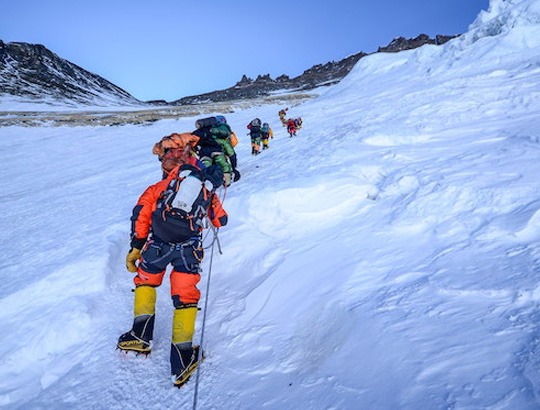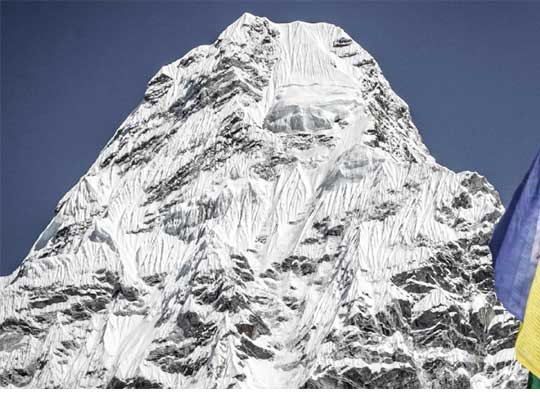Mountaineering Expeditions in Nepal
Explore the world of Mountaineering Expeditions in Nepal. You can undertake an extraordinary adventure amidst the breathtaking Himalayan wilderness. With such a diverse range of challenging routes and breathtaking vistas, Nepal has become a magnet for adventurous souls from around the globe. Get ready to begin on an extraordinary adventure that will surely and certainly push your physical and mental limits, while diving deep into the unparalleled beauty of this majestic land.
Why Choose Nepal for Mountaineering Expeditions in Nepal?
There are numerous reasons why Nepal stands out as the ultimate destination for mountain climbing. Let us delve into the compelling factors that make Nepal an unrivaled choice for your Mountaineering Expeditions in Nepal.
Magnificent Peaks
One of the primary reasons that draw climbers to Nepal is undoubtedly its impressive collection of peaks. Eight out of the ten highest mountains on Earth reside within these borders, including Mount Everest – renowned as “The Roof of The World.”
Standing at a staggering 8,848 meters above sea level, conquering Everest remains a lifelong dream for many mountaineers. However, it is not just about reaching one summit; other formidable peaks such as Kanchenjunga or Makalu present equally thrilling challenges that test both physical stamina and mental fortitude.
Spectacular Sites
Nepal holds breathtaking landscapes that will leave our climbers intrigued. From our snow-capped peaks that seem to touch the sky to the lush valleys, flowing rivers, waterfalls, and serene lakes; the natural beauty of Nepal is a sight to behold.
Imagine standing atop the world, gazing at the vast Himalayan range stretching as far as the eye can see in your Mountaineering Expeditions in Nepal. These magnificent vistas make every moment of your climb a truly unforgettable experience.
Unique and Wonderful Wildlife
Beyond the astonishing peaks we have, Nepal is home to a diverse range of wildlife that adds an extra layer of excitement to your mountaineering journey. Scaling the rugged Himalayan terrain, you can unexpectedly cross paths with these elusive creatures – the mesmerizing snow leopards, formidable Himalayan black bears, elegant musk deer, and an enchanting assortment of various bird species.This close encounter with Nepal’s unique wildlife is a rare opportunity that truly further enhances your epic adventure
Rich Cultural Tapestry of Nepal
Another reason for making Mountain Climbing in Nepal an extravagant trip is to explore unique cultural aspects during these treks. As climbers embark on their journey towards base camps or high-altitude passes leading them closer to their destination peaks, they traverse through quaint villages inhabited by ethnic communities like Sherpas or Tamangs who have lived harmoniously with nature for generations. Their warm hospitality welcomes adventurers along these trails partaking in creating unforgettable memories. Their way of living, their culture, and tradition will undoubtedly be an eye-opening phase in your life too.
Information About Mountaineering Expeditions in Nepal
For optimal Mountaineering Expeditions in Nepal, it is very important to have comprehensive information about your chosen trekking destination, the ideal climbing conditions for oneself, and practical details about almost every little thing. Below, is a concise overview of essential aspects to consider:
Ideal Time to Visit
The best time to take foot on a mountain climbing adventure in Nepal is during the autumn season. This time of the year goes from September to November. During this period, the weather is generally warm and clear, offering excellent climbing conditions. Alternatively, spring (March to April) also provides favorable weather and stunning views, making it another ideal time to conquer Nepal’s peaks.
Weather in Nepal
Nepal experiences four distinct seasons: spring, summer, autumn, and winter. Spring holds warm temperatures and occasional rain showers. Summer, which falls between June and August, brings higher temperatures and monsoon rains. Autumn is known for its cool climate and clear skies, providing perfect conditions for climbing. Winter in Nepal can be extremely cold, with sub-zero temperatures in the higher altitudes. It’s crucial to pack appropriate clothing and gear to suit the prevailing weather conditions.
Safety and Preparation:
Mountain climbing in Nepal demands meticulous preparation and a deep understanding of the challenges that lie ahead. It is essential to equip yourself with appropriate gear, undergo thorough physical training, and acclimatize the high altitudes properly. Additionally, understanding the risks involved in altitude sickness and weather conditions is crucial for a safe and successful climb.
Your Journey Begins Here
At Himalayan Trekking, we take immense pride in providing exceptional mountaineering experiences in Nepal. With our unwavering commitment to the highest standards of safety and expertise, we have established ourselves as leaders in the field of trekking and taking mountaineering enthusiasts on expeditions.
Our team of experienced professionals is ready to guide you on your quest to conquer the Himalayan summits, ensuring an unforgettable adventure filled with triumph, breathtaking beauty, and cherished memories for a lifetime.
With that being said, your safety is our utmost priority. Our expedition leaders hold a wealth of experience and knowledge about trekking and climbing in the Himalayas. Rest assured that you will be in capable hands as our expert leaders provide essential training and guidance throughout the expedition, ensuring a safe and exhilarating experience.
Mountains are calling!!!
FAQ
What permits and documentation are required for a mountaineering expedition in Nepal?
To climb in Nepal, you will need several permits, including the climbing permit for the specific mountain you intend to climb. You will also need a trekking permit for some regions. These requirements can change, so it’s important to check the latest regulations and obtain the necessary permits. We at Himalayan Trekking manage all the trekking permits for you.
How can I acclimatize to high altitudes in Nepal?
Acclimatization is crucial when climbing in the Himalayas in Nepal. It involves gradually ascending to higher altitudes to allow your body to adjust to the reduced oxygen levels. Our climbing itineraries include acclimatization days at different elevations. Proper hydration, a slow and steady pace, and listening to your body are key to avoiding altitude sickness.
What should I pack for a mountaineering expedition in Nepal?
Packing the right gear is essential. You will need high-quality clothing, including down jackets, warm layers, and waterproof gear, as well as specialized mountaineering equipment such as crampons, ice axes, and harnesses. We at Himalayan Trekking and Tours will help you guide on to a detailed packing list.
How can I choose a reputable expedition company for my climb in Nepal?
It’s crucial to research and select a reputable expedition company with experienced guides and a strong safety record. We recommend you look for companies with proper certifications, safety protocols, and positive reviews from previous climbers. Asking for recommendations from other mountaineers or seeking guidance from organizations like the Nepal Mountaineering Association can also be helpful in making your decision.
Mountaineering Expeditions in Nepal
-


Climbing

Challenging

70 Days
-


Climbing

Challenging

30 Days
© 2024 - Himalayan Trekking and Tours (P) Ltd. All Rights Reserved.

